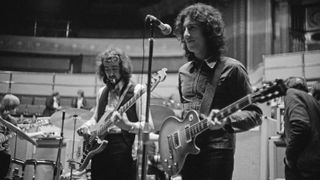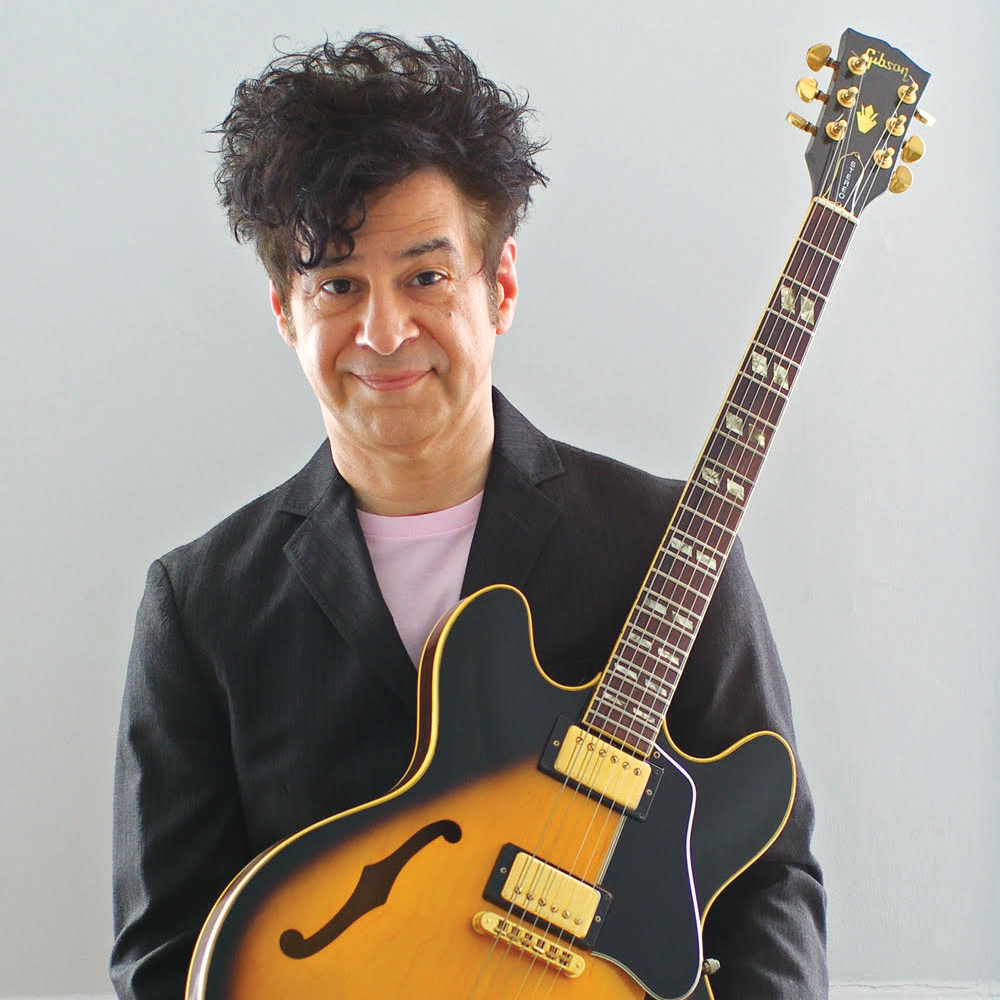"This Was the Secret We’d All Been Searching for!" Discover the Key to Peter Green's “Magic” 1959 'Burst Les Paul Tone
Learn how the legendary Fleetwood Mac guitarist got the incredible out-of-phase sound on his famous 1959 Gibson Les Paul, "Greeny"

“Do you remember when you got your magic Les Paul?”
So asked Andy Ellis of Peter Green in the November 2000 issue of Guitar Player. The guitar in question was none other than Green’s 1959 Gibson Les Paul Standard, a legendary instrument that the Fleetwood Mac founder used to write and record many of the group’s seminal blues cuts, including “Black Magic Woman,” “Oh Well” and “The Green Manalishi (With the Two-Prong Crown).”
Green’s Les Paul was considered “magic” for its out-of-phase sound, a nasal tonality missing from the typical Les Paul repertoire.
Oddly, Green didn’t think much of the assessment.
“I never had a magic one,” he replied to Ellis. “Mine wasn’t magical... It might have looked similar to others from a distance, but it was an old-fashioned one with a funny-shaped neck – a kind of semicircle neck. It just barely worked. The pickups were strong, but I took one of them off. I copied Eric [Clapton].
"I heard him play one night, and he was on the treble pickup all night long. It sounded so good, I thought I’d take my bass pickup off altogether. Try and wait for the same luck. As if it was luck! It takes a lot of genuine practice and worry to get a sound like that.”
ELLIS: But judging from all the Fleetwood Mac photographs, you must have put the pickup back on your Les Paul.
GREEN: I put it back on the wrong way around so that the poles – the pickup screws – were facing in the opposite direction. People would say to me, “You got that special out-of-phase sound.” I don’t know what out-of-phase is. Phase for what? Phase – it sounds like a good name for a group.
Mind you, it didn’t make any difference to me. People would say that I got a special sound and try to force me to agree, but I don’t think so.
As it happened, Ellis already knew the “secret” behind the sound of Green’s Les Paul. In 1994, he’d approached Jol Dantzig, then with Hamer Guitars, to have him build a custom dual-humbucker guitar inspired by Green’s Les Paul. Ellis told the story in the same issue in which his Peter Green interview appeared.
By the time of his visit to Dantzig, Green’s Les Paul had long been the main instrument of Gary Moore, who had befriended Green in the late '60s and purchased the guitar from him a few years later, in the early '70s.
“As we discussed the wiring possibilities,” Ellis wrote, “Dantzig recalled that Gary Moore stopped by the Hamer factory in the early '80s with Green’s Les Paul.
“I asked if I could check out the wiring," remembered Dantzig, "and I carefully examined the pickups and their controls. Everything looked totally stock – the pickups were wired in phase – but I knew they didn’t sound stock when played together.
“I used a compass to measure the pickups’ magnetic polarity. I discovered that one magnet was oriented north-to-south while the other was oriented south-to-north. The pickups were magnetically out of phase – this was the secret we’d all been searching for!"
“Dantzig agreed to incorporate magnetically out-of-phase pickups and reverse the neck pickup in the custom Hamer,” Ellis continued. “I sent a pair of Antiquity humbuckers to Seymour Duncan, requesting that he flip the magnet on one. Before I could explain why, Duncan said, ‘Ahh – you want the Peter Green mod.’”
So did the wiring replicate Green’s nasal tone? The answer, Ellis said, was an unequivocal yes.
“In a dual-pickup setting where each humbucker has its own volume pot, you can bleed the relative phase shift to create timbres ranging from a piercing howl to a subtle treble boost.”
Magnetically generated phase shift seems to respond to pitch changes – the higher the note, the more pronounced the effect
Andy Ellis
But as Ellis points out, the resulting tone isn’t the same that you get from wiring humbuckers out of phase. It seems that magnetically out-of-phase pickups are responsive to pitch, creating an entirely different sort of sound.
“Oddly, the resulting sound is sweeter and more musical than what you get from wiring humbuckers out of phase,” Ellis writes. “Magnetically generated phase shift seems to respond to pitch changes – the higher the note, the more pronounced the effect. Chords and bass notes don’t have the thin, shrill sound of out-of-phase wiring, yet high notes played on the top strings have a pronounced hollow cry.”
In the years since Ellis wrote his story, Green’s guitar changed hands several times. Moore sold the guitar in 2006 for financial reasons. It eventually ended up in the hands of Metallica’s Kirk Hammett, who purchased it in 2014.
Get The Pick Newsletter
All the latest guitar news, interviews, lessons, reviews, deals and more, direct to your inbox!

Christopher Scapelliti is editor-in-chief of Guitar Player magazine, the world’s longest-running guitar magazine, founded in 1967. In his extensive career, he has authored in-depth interviews with such guitarists as Pete Townshend, Slash, Billy Corgan, Jack White, Elvis Costello and Todd Rundgren, and audio professionals including Beatles engineers Geoff Emerick and Ken Scott. He is the co-author of Guitar Aficionado: The Collections: The Most Famous, Rare, and Valuable Guitars in the World, a founding editor of Guitar Aficionado magazine, and a former editor with Guitar World, Guitar for the Practicing Musician and Maximum Guitar. Apart from guitars, he maintains a collection of more than 30 vintage analog synthesizers.

“Noel’s process is purely guitar. He’s so in love with the chords, and he was cycling through and through... He wouldn’t stop until he was satisfied”: How Noel Gallagher and Beck helped bring the Black Keys' latest funky full-length, Ohio Players, to life

“Sometimes things like that just come together, like a piece of magic. I wrote that song in just five minutes”: Dickey Betts on dueling with Duane Allman, composing Allman Brothers' biggest hit, and the oddball Les Paul/SG hybrid he “personally designed”
Most Popular








